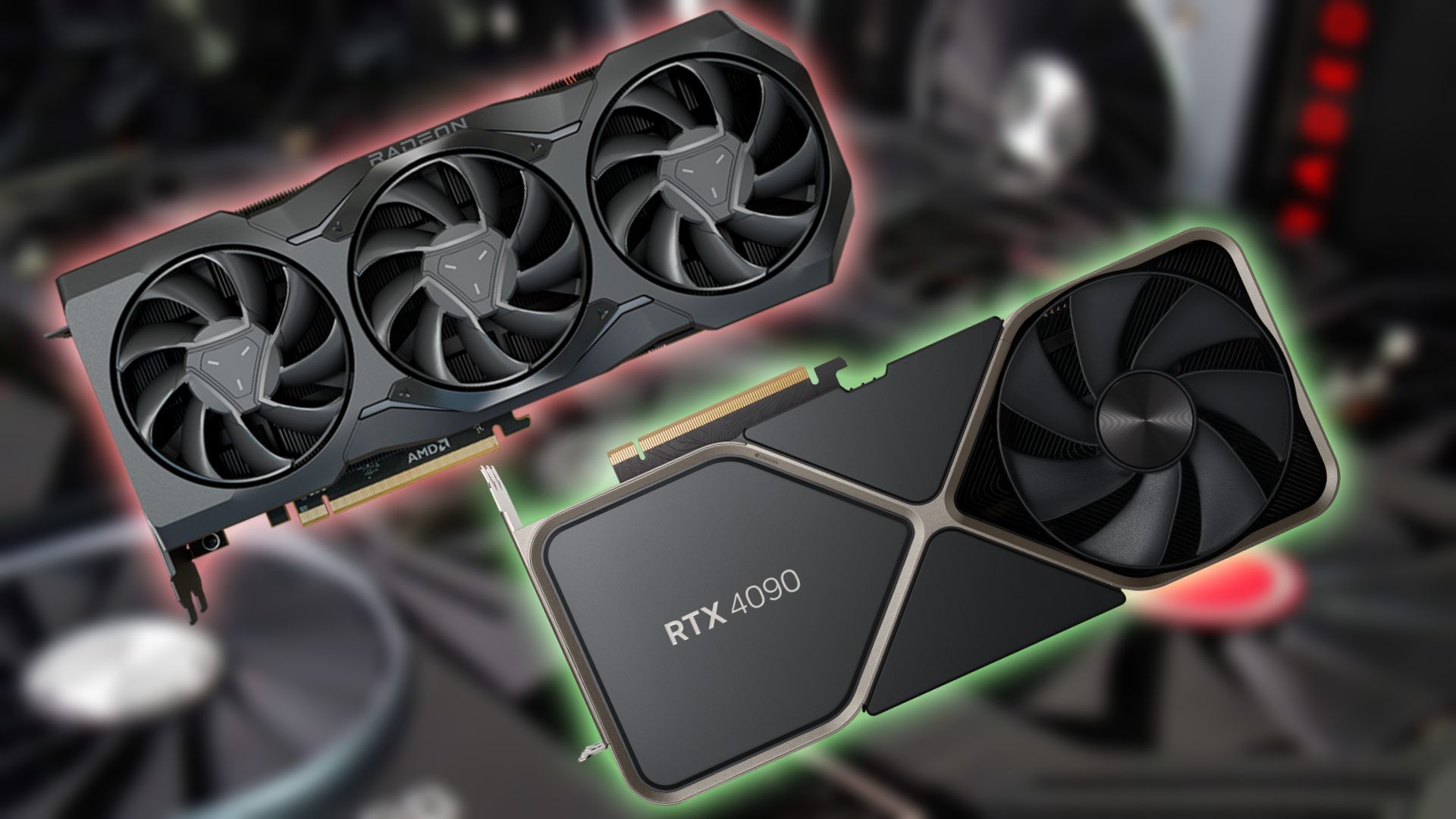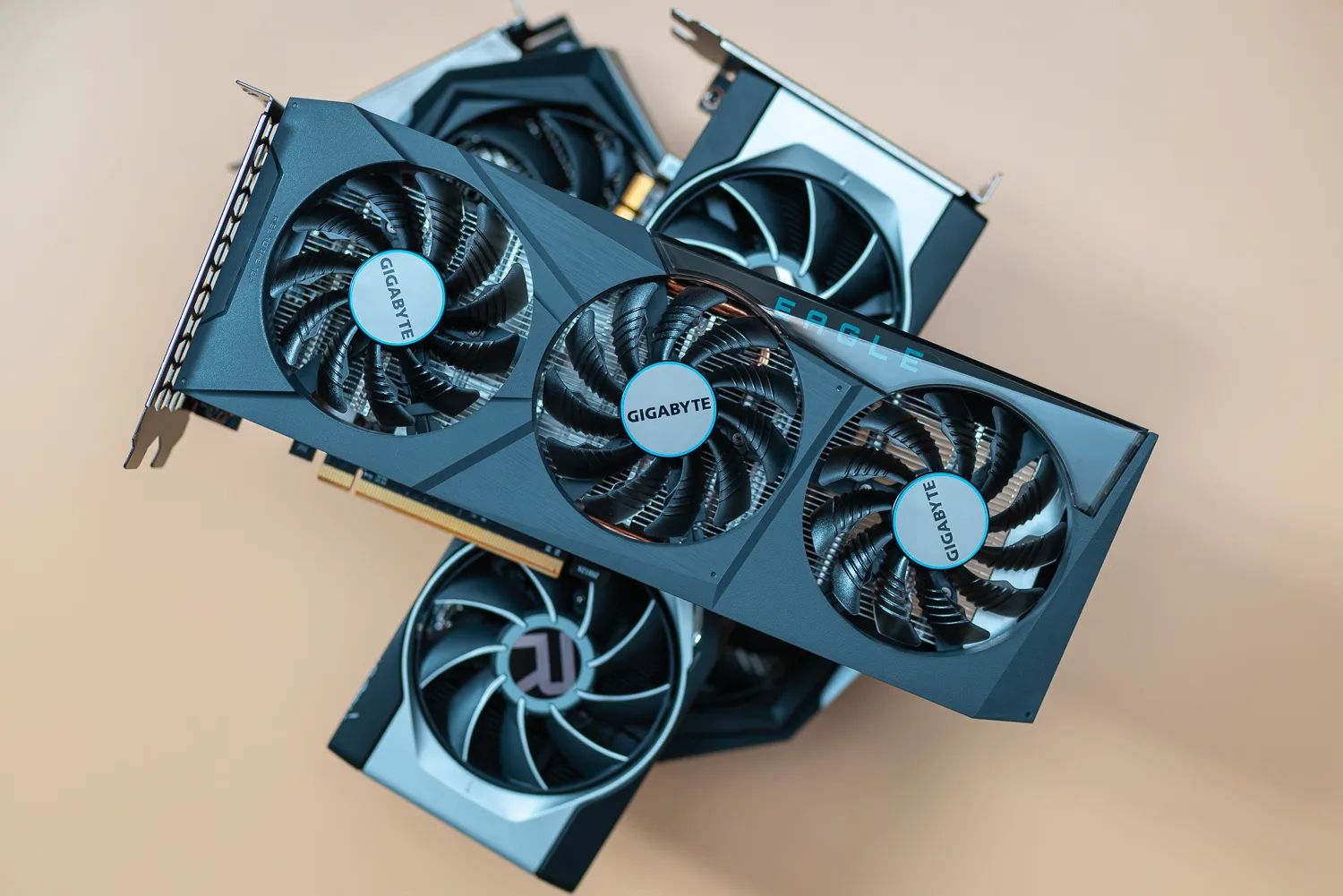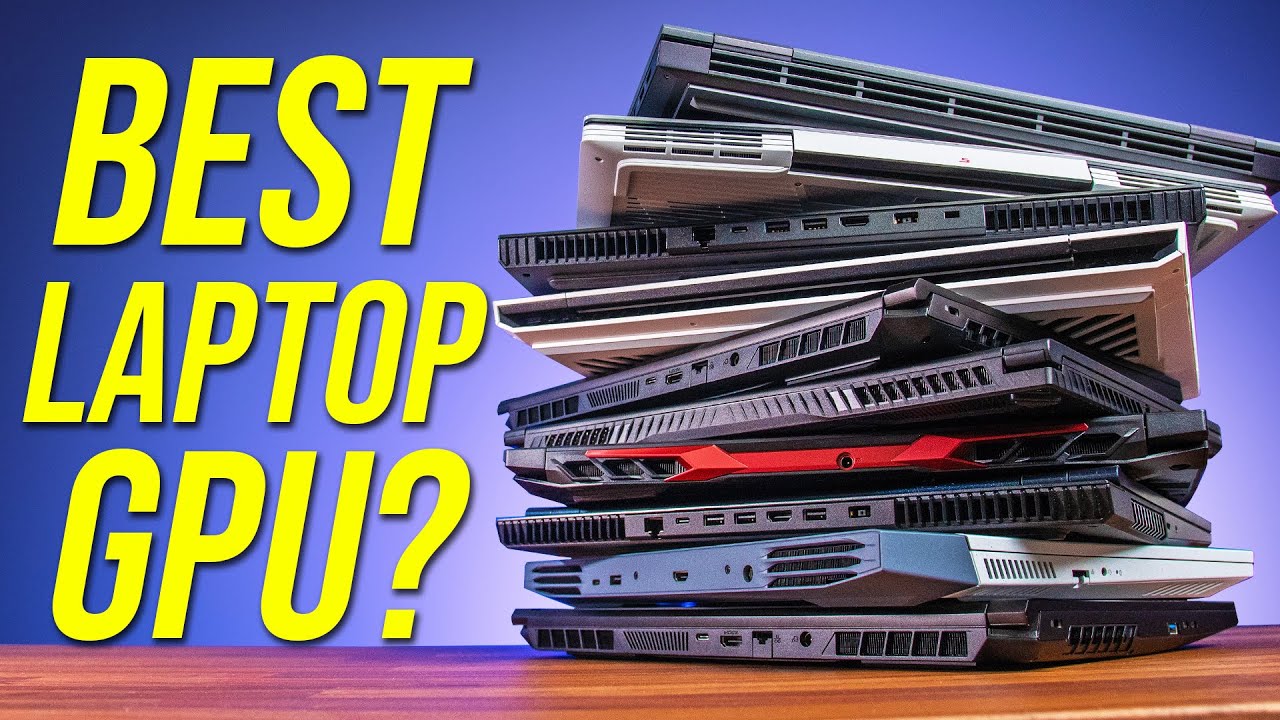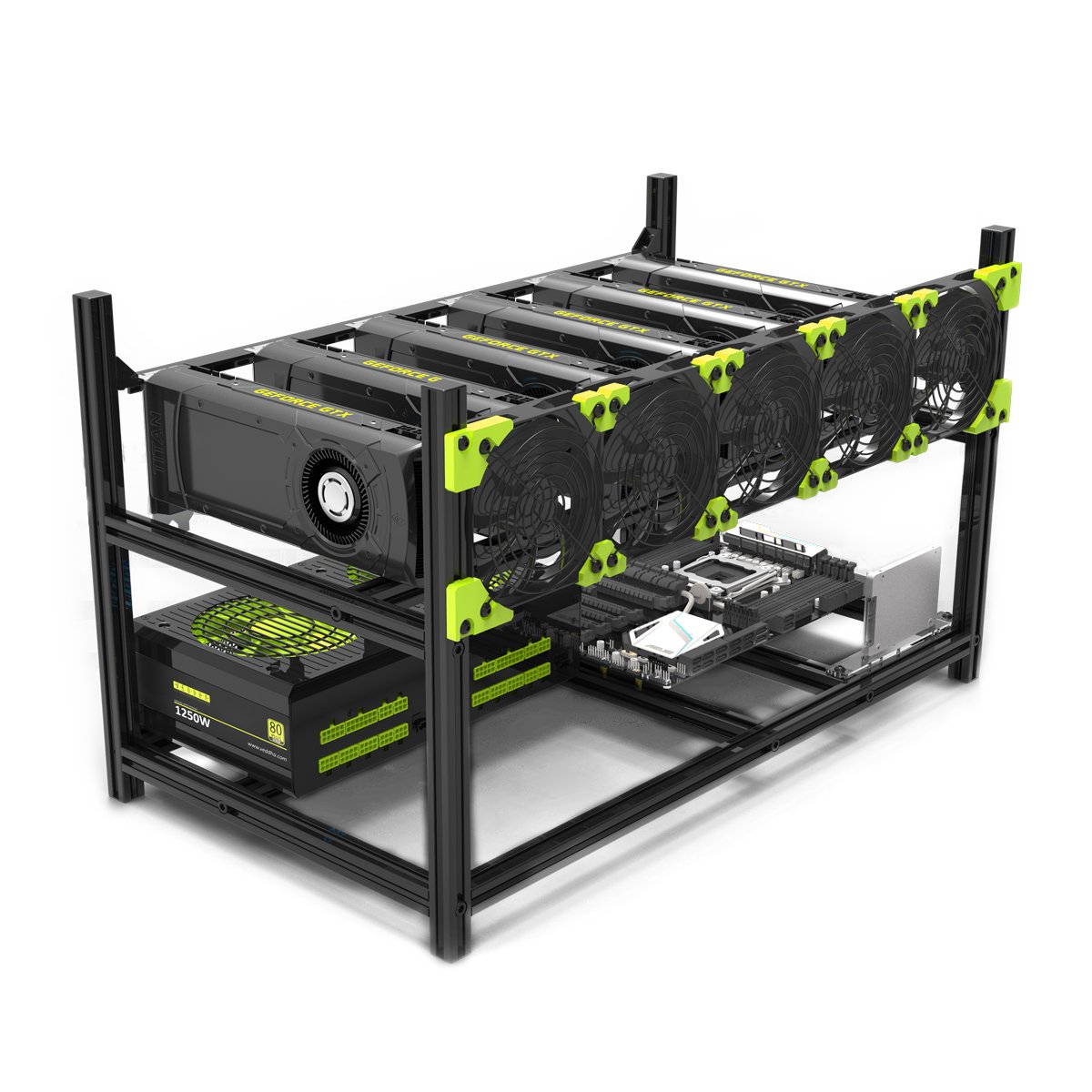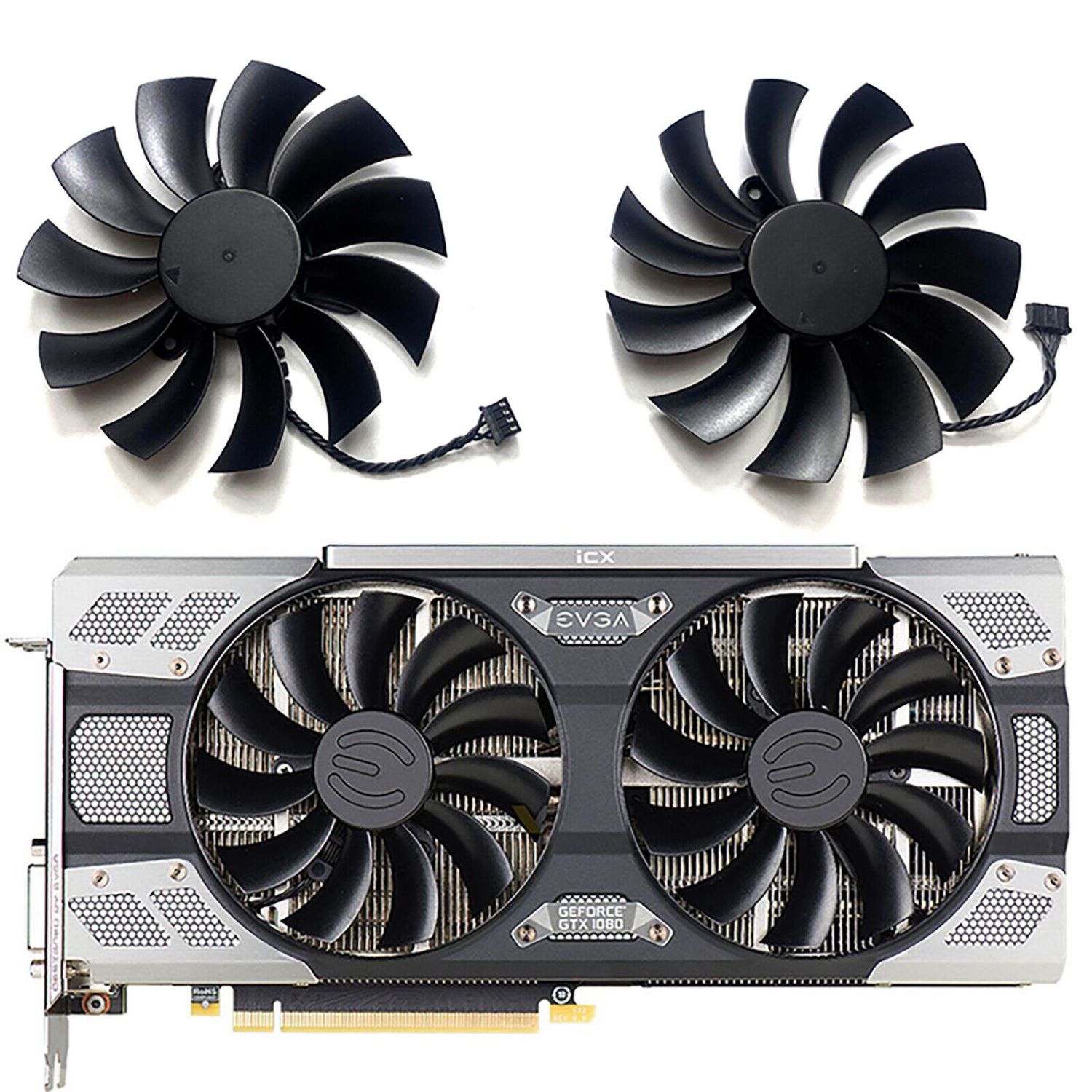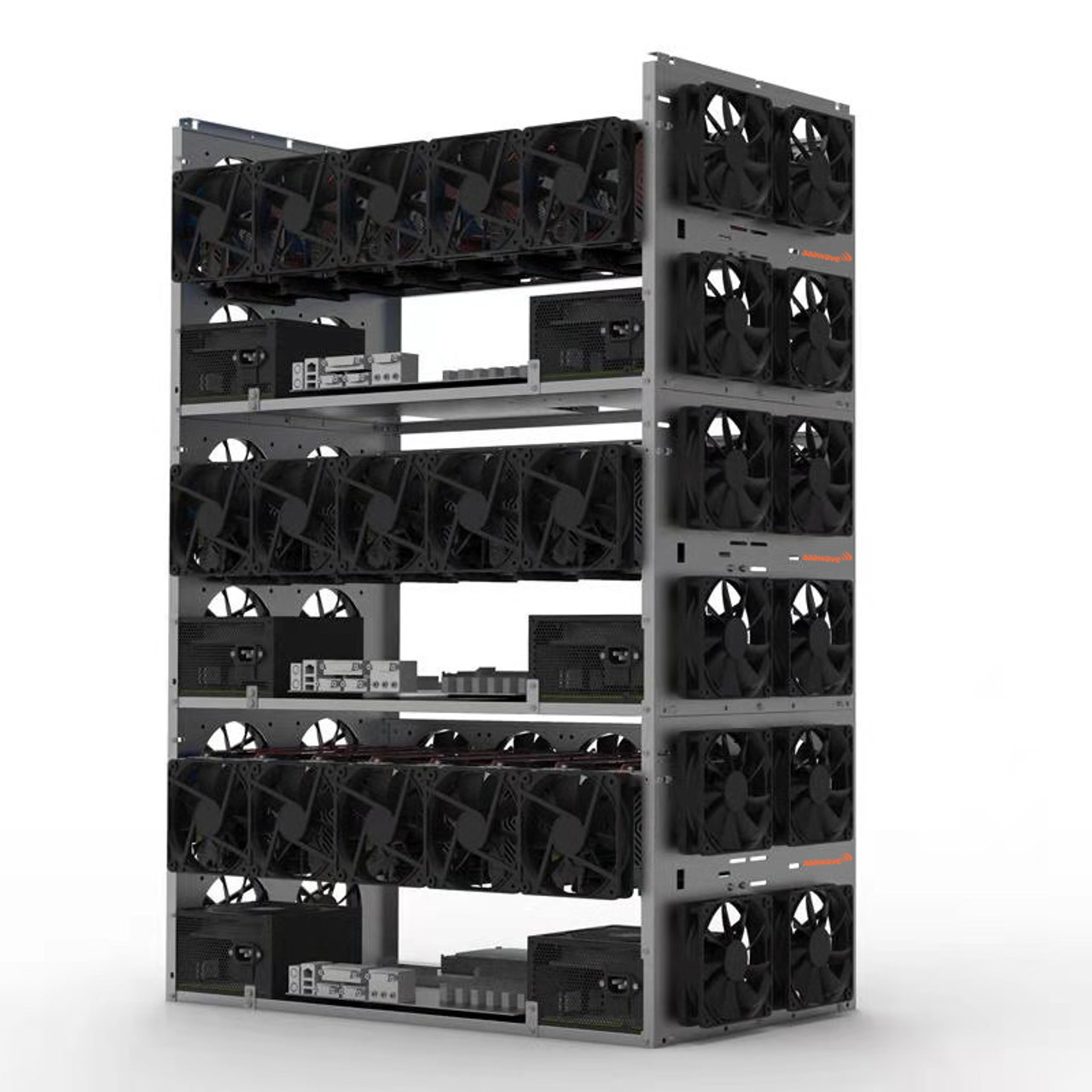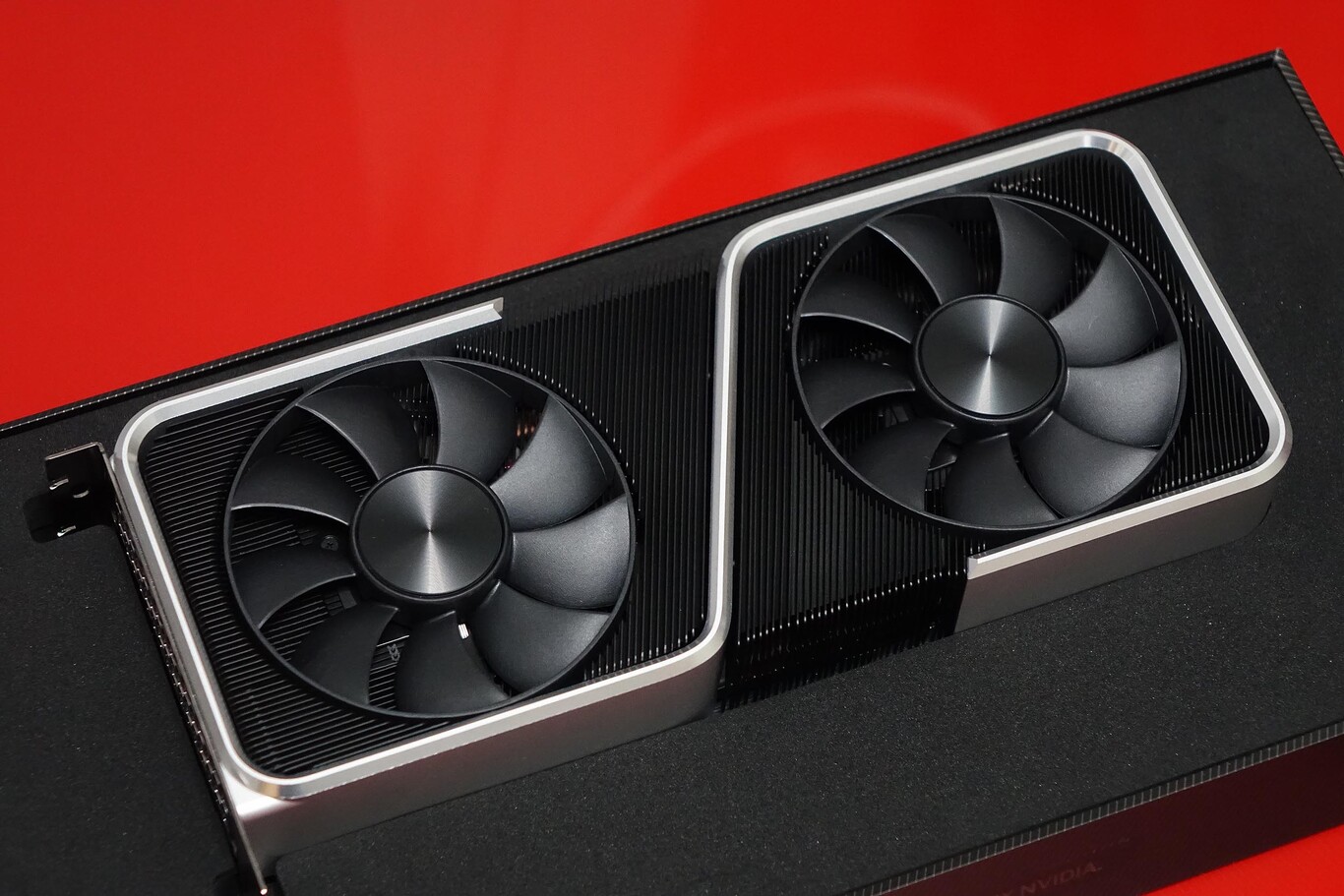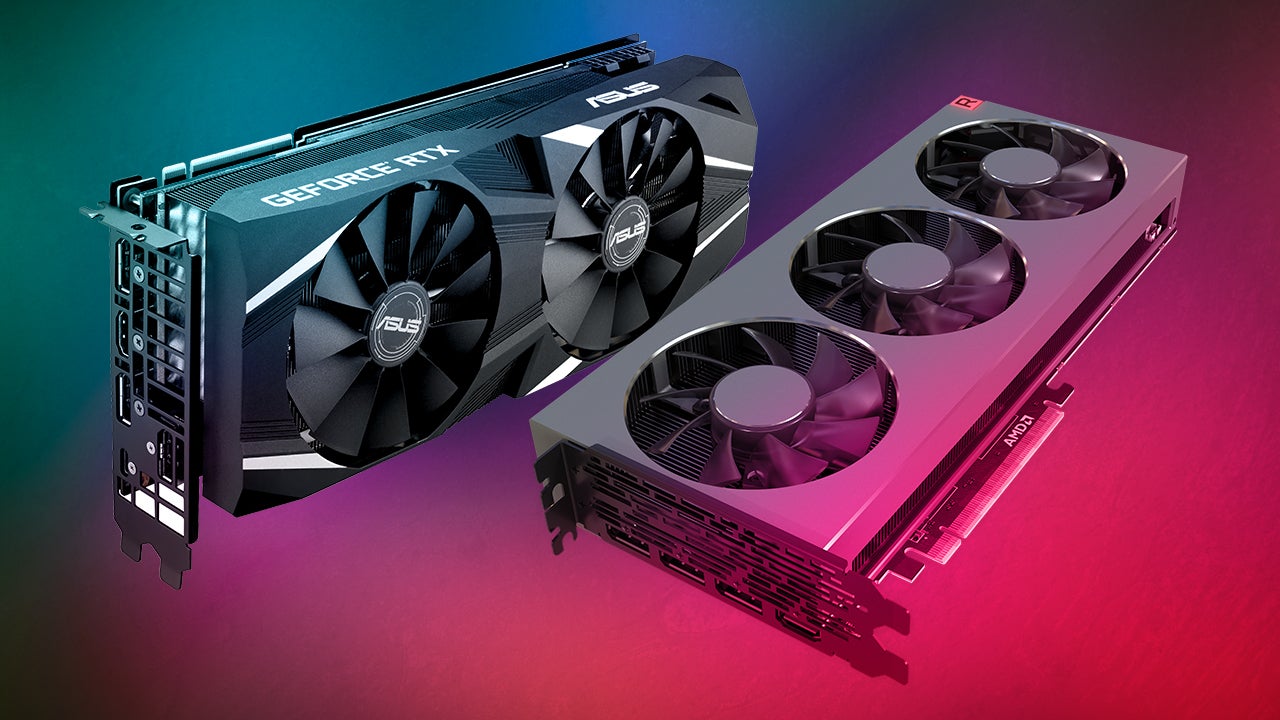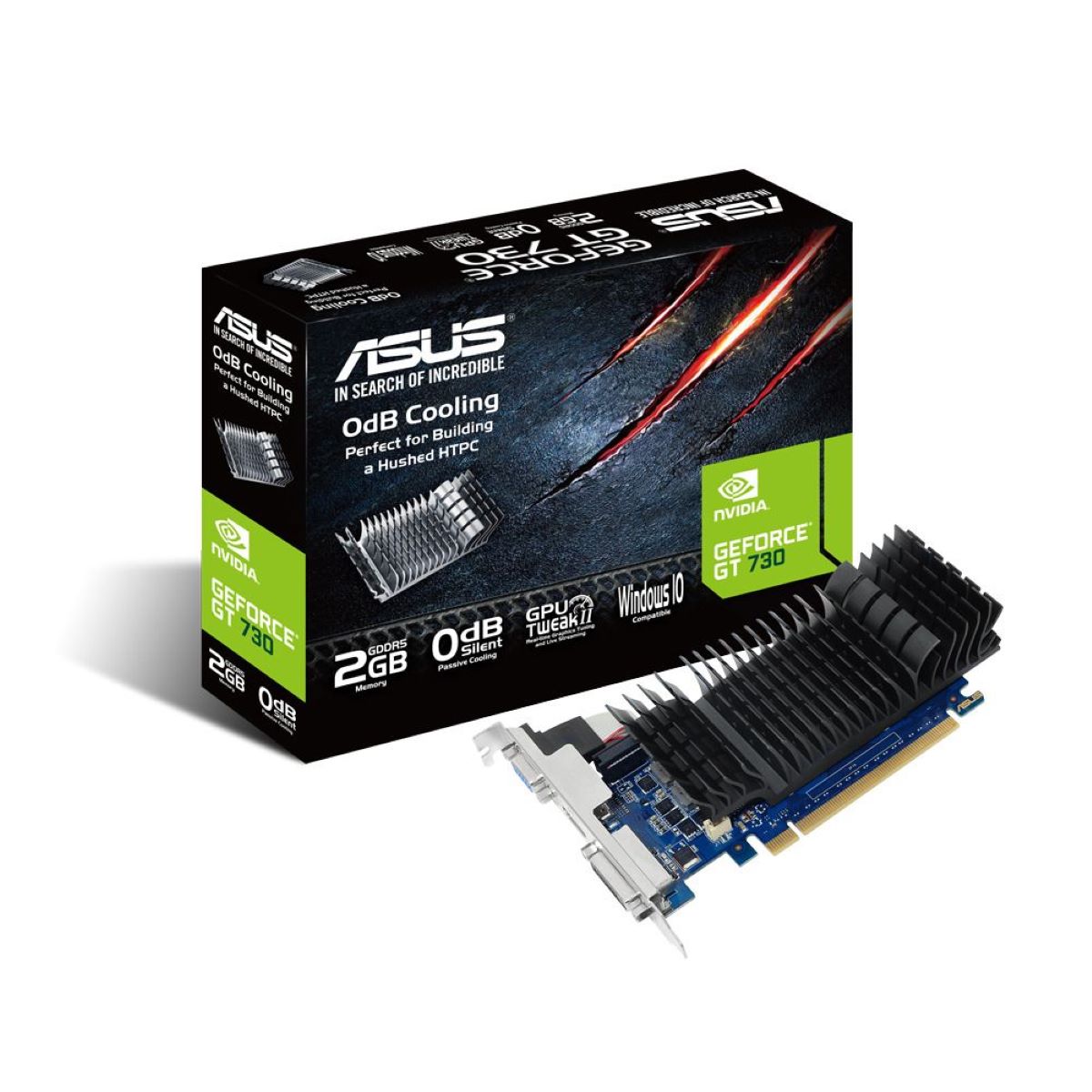Introduction
When it comes to choosing a graphics processing unit (GPU), there are several factors to consider. A GPU is a crucial component in a computer system, responsible for rendering graphics and accelerating image and video processing tasks. Whether you’re a gamer, graphic designer, or video editor, having a good GPU can significantly enhance your computing experience.
In this article, we’ll explore what makes a good GPU and how to choose the right one for your needs. We’ll dive into the technical specifications, architecture, memory, processing power, cooling and power consumption, compatibility and connectivity, price and value, and most importantly, graphics, gaming, and VR performance.
Before we delve into the specific details, it’s important to understand the basics of GPU technology. GPUs consist of cores that are designed to handle complex mathematical calculations quickly and efficiently. These cores work together to process and render graphics, making them crucial for smooth and immersive visual experiences.
As technology advances, GPUs become more powerful and efficient. It’s important to keep up with the latest advancements to ensure optimal performance in your computing tasks. Now let’s explore the key factors that make a good GPU.
GPU Basics
Before we dive into the specific features that make a good GPU, let’s first understand the basics of GPU technology. A GPU, or Graphics Processing Unit, is a specialized electronic circuit that is designed to quickly process and render images, videos, and animations. It works in conjunction with the CPU (Central Processing Unit) to handle complex graphical tasks efficiently.
Unlike the CPU, which handles a wide range of tasks in a computer system, the GPU is specifically optimized for graphic-intensive workloads. It consists of multiple cores that work in parallel to perform calculations, making it capable of handling massive amounts of data simultaneously. This parallel processing capability is what makes GPUs so effective for rendering complex graphics in real-time.
Furthermore, GPUs are designed with dedicated memory, known as VRAM (Video Random Access Memory), to store and access the data needed for rendering images and videos. Having dedicated memory ensures faster access to data, reducing latency and improving overall performance.
Over the years, GPUs have evolved significantly, becoming more powerful and energy-efficient. Modern GPUs are equipped with advanced features such as ray tracing, which enhances the realism of lighting and shadows in rendered scenes. They also include tensor cores that accelerate machine learning tasks, making them suitable for AI and deep learning applications.
When choosing a GPU, it’s essential to consider the specific workload or purpose you have in mind. Different GPUs excel in different areas, whether it’s gaming, content creation, or professional video editing. Understanding the basic architecture and capabilities of GPUs will help you make an informed decision.
Now that we have a grasp of the fundamental concepts, let’s move on to explore the technical specifications and features that make a good GPU.
Technical Specifications
When considering a GPU, it’s important to pay attention to the technical specifications that contribute to its overall performance. Understanding these specifications will help you determine if a GPU is capable of meeting your specific needs and requirements.
One of the key specifications to consider is the GPU’s clock speed, measured in megahertz (MHz) or gigahertz (GHz). Higher clock speeds indicate faster processing capabilities, resulting in smoother and more responsive graphics rendering. Additionally, the number of cores within the GPU plays a significant role in determining its processing power. GPUs with a higher core count can handle more complex calculations simultaneously, leading to improved overall performance.
Another crucial specification is the memory capacity of the GPU. More VRAM allows for the processing and storage of larger and more complex textures and models. This is especially important in graphic-intensive tasks like gaming or 3D rendering, where a larger memory capacity can result in smoother gameplay and faster rendering times.
The memory bandwidth, measured in gigabytes per second (GB/s), also affects GPU performance. It determines how quickly data can be read from and written to the VRAM. A higher memory bandwidth enables faster data transfers and reduces potential bottlenecks in processing.
Furthermore, the GPU’s memory interface width should be considered. This refers to the number of memory lanes that can be used to access the VRAM. A wider memory interface allows for faster data transfer between the GPU and VRAM, resulting in improved performance and reduced latency.
While considering the technical specifications, it’s also important to take into account the power requirements of the GPU. GPUs vary in terms of power consumption, and it’s crucial to ensure that your power supply unit can provide sufficient power to the GPU without causing stability issues.
Overall, understanding the technical specifications of a GPU is essential for making an informed decision. By considering factors such as clock speed, core count, memory capacity, memory bandwidth, and power requirements, you can select a GPU that is well-suited to your specific needs and computing tasks.
Architecture
The architecture of a GPU plays a crucial role in determining its overall performance and capabilities. The architecture refers to the design and organization of the GPU’s cores, memory subsystem, and other components. Different GPU architectures offer varying levels of performance, efficiency, and features.
One common architecture found in many GPUs is the Graphics Core Next (GCN) architecture, developed by AMD. GCN architecture is known for its scalability and efficiency, allowing for high-performance graphics rendering and compute tasks. It includes features such as asynchronous compute, which enables the GPU to handle multiple tasks concurrently, improving performance and efficiency.
NVIDIA, on the other hand, utilizes the Turing architecture in many of its GPUs. The Turing architecture introduces real-time ray tracing and AI capabilities, delivering more realistic lighting and reflections in games and accelerating machine learning tasks. It also includes tensor cores, specifically designed to accelerate deep learning workflows.
Recently, both AMD and NVIDIA have introduced newer architectures, such as AMD’s RDNA and NVIDIA’s Ampere. These architectures aim to further improve performance, efficiency, and features in areas such as gaming, content creation, and artificial intelligence.
When considering the architecture of a GPU, it’s important to assess its compatibility with software applications or game engines you intend to use. Some applications may have specific optimizations or features that are better utilized on certain GPU architectures.
Additionally, different GPU architectures may have varying levels of driver support and software compatibility. It’s crucial to ensure that the GPU you choose is well-supported by the operating system and software you plan to use, to avoid potential compatibility issues.
Overall, understanding the architecture of a GPU is important to assess its performance capabilities and compatibility with software applications. By considering factors such as scalability, efficiency, real-time ray tracing, AI acceleration, and software compatibility, you can make an informed decision when choosing a GPU based on its architecture.
Memory
The memory of a GPU plays a crucial role in its performance and ability to handle complex graphical tasks. GPU memory, also known as VRAM (Video Random Access Memory), is responsible for storing and accessing the data needed for rendering images, textures, and models.
When it comes to GPU memory, two factors are important to consider: capacity and speed. The capacity of the VRAM determines how much data can be stored and accessed at any given time. GPUs with larger memory capacities can handle larger and more complex textures and models, resulting in smoother graphics rendering.
Furthermore, the speed of the VRAM affects the rate at which data can be read from and written to the memory. Higher VRAM speeds lead to faster data transfers and reduce potential bottlenecks in processing. This is especially important in tasks that involve large datasets or high-resolution textures.
In addition to the VRAM, GPUs also utilize system memory, also known as RAM (Random Access Memory). System memory is responsible for storing and transferring data between the CPU and GPU. The amount and speed of system memory can impact the overall performance of the GPU, especially in scenarios that involve data-intensive workloads or multi-tasking.
It’s important to ensure that the GPU you choose has sufficient VRAM and system memory capabilities to handle your specific needs. Gaming, 3D rendering, and video editing tasks often require larger memory capacities for smooth performance. Additionally, GPU-intensive tasks such as machine learning or scientific simulations may also benefit from GPUs with higher memory capacities.
When considering GPU memory, it’s also essential to consider the memory interface width. The memory interface width determines the number of memory lanes that can be used to access the VRAM. A wider memory interface enables faster data transfer between the GPU and VRAM, leading to improved performance and reduced latency.
Overall, memory is a critical factor when choosing a GPU. Assessing the capacity, speed, and memory interface width of the VRAM, as well as the system memory capabilities, will help you select a GPU that can handle your specific computing needs and deliver optimal performance.
Processing Power
The processing power of a GPU is a vital consideration when choosing the right graphics card for your needs. It determines how efficiently and quickly the GPU can perform calculations and handle complex graphical tasks. The processing power of a GPU is influenced by several factors, including the number of cores, clock speed, and architecture.
The number of cores within a GPU plays a significant role in its processing power. More cores allow for parallel processing, where multiple tasks can be executed simultaneously. This leads to faster calculations and improved performance, especially in scenarios that involve complex rendering or computations.
Additionally, the clock speed of a GPU impacts its processing power. Clock speed is measured in megahertz (MHz) or gigahertz (GHz) and refers to how fast the GPU’s cores can perform calculations. Higher clock speeds result in faster processing and smoother graphics rendering, especially in tasks that demand real-time responsiveness.
Another factor that affects processing power is the architecture of the GPU. Different architectures offer varying levels of performance and efficiency. Newer GPU architectures often introduce improvements in core design, memory subsystems, and optimizations for specific workloads, resulting in increased processing power.
It’s important to note that processing power alone does not guarantee optimal performance. The specific tasks and software applications you intend to use should also be taken into consideration. Some applications, such as video editing or 3D rendering software, are designed to leverage the processing power of GPUs. Understanding the requirements of these applications will help you choose a GPU that can deliver the necessary processing capabilities.
Furthermore, it’s essential to consider the compatibility of the GPU with the software applications you plan to use. Some applications may have specific optimizations or requirements for GPU processing power, and choosing a compatible GPU will ensure optimal performance.
In summary, the processing power of a GPU, determined by factors such as the number of cores, clock speed, and architecture, is a crucial consideration when selecting a graphics card. By understanding the requirements of your specific tasks and software applications, you can choose a GPU that offers the necessary processing capabilities for optimal performance.
Cooling and Power Consumption
When choosing a GPU, it’s important to consider its cooling capabilities and power consumption. These factors can greatly impact the overall performance, longevity, and stability of the graphics card.
Cooling is crucial to prevent a GPU from overheating during intensive tasks. GPUs generate a significant amount of heat, especially when running demanding games or performing complex calculations. Therefore, it’s essential to ensure that the GPU has an effective cooling solution, such as fans or heat sinks, to dissipate the heat and maintain optimal operating temperatures. GPUs with inadequate cooling may experience thermal throttling, where the performance is reduced to prevent overheating, resulting in decreased performance and potential instability.
Power consumption is another important consideration when choosing a GPU. Different graphics cards have varying power requirements, and it’s crucial to ensure that your power supply unit (PSU) can provide sufficient power. GPUs with higher power consumption may require a higher wattage PSU to ensure stable operation. It’s recommended to consult the PSU manufacturer’s specifications and consider the power requirements of the GPU to avoid potential power-related issues.
Efficient power management is desirable for both performance and energy-saving purposes. Many modern GPUs incorporate power-saving technologies, such as NVIDIA’s GPU Boost or AMD’s PowerTune, which dynamically adjust clock speeds and power consumption based on the workload. These technologies can help optimize performance while minimizing power consumption when the GPU is idle or running less demanding tasks.
Another aspect to consider is the design of the GPU itself. Some graphics cards come with custom cooling solutions, such as larger heatsinks or liquid cooling, which offers better cooling performance compared to reference designs. These custom designs may also provide quieter operation, contributing to a more pleasant gaming or computing experience.
Overall, the cooling capabilities and power consumption of a GPU are essential factors to consider. Ensuring adequate cooling for optimal performance and stability, as well as evaluating power requirements and power management features, will help you select a graphics card that meets your needs while maintaining efficient and reliable operation.
Compatibility and Connectivity
Compatibility and connectivity are crucial factors to consider when choosing a GPU. Ensuring that the graphics card is compatible with your system and offers the necessary connectivity options will ensure seamless integration and optimal performance.
One important aspect of compatibility is the interface of the GPU. Most modern GPUs utilize the PCIe (Peripheral Component Interconnect Express) interface, which provides high-speed data transfer between the GPU and the motherboard. It’s vital to ensure that your motherboard is equipped with the appropriate PCIe slots to accommodate the GPU you plan to install. Checking the compatibility between the GPU’s PCIe version and the motherboard’s PCIe slots is vital to ensure proper communication and optimal performance.
Additionally, you should consider the physical dimensions of the GPU to ensure it can fit in your computer case. Some high-performance graphics cards may require more space due to their larger cooling solutions or extended PCBs (Printed Circuit Boards). Before purchasing a GPU, check your case’s dimensions and the GPU’s length, width, and height to verify compatibility and ensure there’s enough clearance.
Connectivity options are also essential to consider. Most GPUs offer a range of display outputs, such as HDMI, DisplayPort, and DVI, to connect monitors and other display devices. Ensure that the GPU has the necessary display outputs to match your display devices’ requirements. Additionally, if you plan to connect multiple monitors, make sure the GPU has adequate display outputs to support your desired setup.
Furthermore, if you have specific requirements for audio output, such as connecting to a home theater system or using a specific audio interface, check whether the GPU supports the necessary audio connections, such as HDMI or optical outputs.
Software compatibility is another critical aspect to evaluate. Ensure that the GPU is compatible with the operating system you plan to use, as well as the software applications you rely on. Check for official driver support from the GPU manufacturer for your operating system, as outdated or unsupported drivers can lead to compatibility issues and instability.
Lastly, it’s worth considering the overall system requirements when selecting a GPU. Ensure that your power supply unit (PSU) can provide sufficient power for the graphics card, and that your CPU and RAM are capable of handling the GPU’s performance capabilities. A well-balanced system will ensure optimal compatibility and performance.
By considering compatibility in terms of interface, physical dimensions, connectivity options, software compatibility, and overall system requirements, you can select a GPU that seamlessly integrates into your system and provides the necessary connectivity for your specific needs.
Price and Value
The price and value of a GPU are important considerations when making a purchase decision. While everyone wants the best performance, it’s crucial to find a balance between the price you’re willing to pay and the value you expect to receive from the graphics card.
When evaluating the price of a GPU, consider your budget and the specific requirements of your computing needs. Higher-end GPUs often come with a higher price tag due to their advanced features, superior performance, and newer architectures. However, it’s essential to assess whether the additional cost is justified by the benefits you will receive.
One way to determine the value of a GPU is to assess its performance in relation to its price. Look for independent reviews and benchmarks that compare the GPU’s performance against its competitors. This will give you a better understanding of how it performs for its price range and whether it provides good value for money.
Consider the specific tasks or applications you will be using the GPU for. If you are primarily gaming, for example, it’s important to evaluate the GPU’s gaming performance and how it compares to other models in its price range. Look for features such as real-time ray tracing, high refresh rates, and support for the latest gaming technologies to enhance your gaming experience.
Additionally, assess the longevity of the GPU and its ability to handle future games or applications. Investing in a GPU with a bit more power and capabilities than what you currently need can help future-proof your system, allowing you to enjoy smooth performance for a longer period of time.
Consider the warranty and customer support provided by the GPU manufacturer. A longer warranty period can provide peace of mind and protection against any potential defects. Good customer support can also be valuable if you encounter any issues or need assistance with your GPU.
Lastly, consider the value of any bundled software or game promotions that come with the GPU. Some graphics cards may come with free software, game codes, or subscriptions, which can add value to your purchase.
Overall, when evaluating the price and value of a GPU, consider your budget, the specific tasks you will be performing, the GPU’s performance, longevity, warranty, customer support, and any additional bundled promotions. By assessing these factors, you can make an informed decision and find a GPU that provides the best balance between price and value for your needs.
Graphics Performance
Graphics performance is a crucial factor to consider when choosing a GPU, especially if you are involved in tasks that require rendering realistic visuals, such as gaming, graphic design, or 3D modeling. The graphics performance of a GPU determines its ability to handle complex graphical tasks and deliver smooth and immersive visual experiences.
One of the key aspects to evaluate is the GPU’s rendering capabilities. This includes features such as shading, lighting, texture mapping, and anti-aliasing. Look for GPUs that offer advanced rendering techniques, like real-time ray tracing or advanced shading models, which can greatly enhance the realism and visual quality of rendered images.
Consider the GPU’s performance in terms of its ability to handle high-resolution displays. Higher resolutions require more pixel-pushing power, and GPUs with greater computational capabilities and larger VRAM capacities can handle higher resolutions more effectively. This is particularly important if you own a high-resolution monitor, such as a 4K or ultrawide display.
Another factor to consider is support for multiple displays. If you plan to use multiple monitors, ensure that the GPU has the necessary display outputs to accommodate your desired setup. Additionally, check for features like AMD Eyefinity or NVIDIA Surround that enhance multi-monitor experiences and provide seamless spanning of the desktop across multiple displays.
Compatibility with popular graphics APIs (Application Programming Interfaces) is also important for optimal graphics performance. Look for GPUs that support the latest versions of APIs, such as DirectX or Vulkan, as these APIs provide access to advanced rendering features and optimizations in modern games and graphics software.
Benchmark tests and independent reviews can provide valuable insights into the graphics performance of specific GPUs. They measure frame rates and performance in various games and applications, giving you an idea of how well a GPU performs. Consider the results in the games or applications you plan to use to determine if a GPU meets your expectations for smooth and immersive graphics.
Lastly, keep in mind that graphics performance is not solely determined by the GPU alone. Other factors, such as the CPU and RAM, also play a role in overall performance. A well-balanced system, with a powerful GPU complemented by a capable CPU and sufficient RAM, will deliver the best graphics performance.
By considering factors such as rendering capabilities, ability to handle high-resolution displays, support for multiple monitors, compatibility with graphics APIs, benchmark performance, and system balance, you can choose a GPU that provides the graphics performance necessary to meet your specific needs.
Gaming Performance
When it comes to gaming, the performance of the GPU is of utmost importance. A high-performance GPU can greatly enhance your gaming experience by delivering smooth, immersive, and visually stunning gameplay. When evaluating a GPU’s gaming performance, several key factors should be considered.
One of the primary considerations is the GPU’s ability to handle high-resolution gaming. Higher resolutions, such as 1440p or 4K, require more graphical processing power to render the increased number of pixels. GPUs with greater computational capabilities and larger VRAM capacities can handle high-resolution gaming more effectively, allowing for more detailed and visually captivating gameplay.
In addition to resolution, consider the GPU’s ability to maintain high frame rates. A higher frame rate results in smoother gameplay and reduces stuttering or lagging. GPUs with faster clock speeds, higher core counts, and optimized architecture excel in delivering high frame rates, ensuring a more fluid gaming experience.
Furthermore, look for GPUs that support advanced gaming features and technologies. Features like real-time ray tracing can significantly enhance the realism of lighting, shadows, and reflections in games, creating a more immersive visual experience. Additionally, technologies like NVIDIA DLSS (Deep Learning Super Sampling) or AMD FidelityFX can improve image quality and performance in supported games.
It’s also essential to consider the compatibility of the GPU with popular gaming platforms and APIs. Whether you primarily game on Windows, macOS, or Linux, ensure that the GPU has driver support for your operating system. Additionally, compatibility with DirectX or Vulkan, which are widely used gaming APIs, is crucial for optimal performance and compatibility with modern games.
Independent benchmark tests and reviews can provide valuable insights into a GPU’s gaming performance. These tests measure frame rates, graphical fidelity, and performance in popular games, giving you an idea of how well a GPU performs under different gaming scenarios. Consider the benchmark results in the specific games you plan to play to gauge the GPU’s suitability for your gaming needs.
Lastly, keep in mind that gaming performance is influenced by various factors, including the CPU, RAM, and storage speed. A well-balanced system with a powerful GPU, capable CPU, and sufficient RAM will deliver the best gaming performance.
By considering factors such as resolution support, frame rates, advanced gaming features, compatibility with gaming platforms and APIs, benchmark performance, and overall system balance, you can choose a GPU that provides excellent gaming performance and ensures an immersive and enjoyable gaming experience.
VR Performance
Virtual Reality (VR) has revolutionized the gaming and entertainment industry, providing immersive experiences that transport players into virtual worlds. To enjoy a seamless and immersive VR experience, having a GPU capable of delivering high-performance VR is essential. Several factors should be considered when evaluating a GPU’s VR performance.
One of the primary factors is the GPU’s ability to handle the demanding computational requirements of VR. VR involves rendering two separate high-resolution images, one for each eye, in real-time. This puts a heavy load on the GPU’s processing power, requiring higher clock speeds, greater core counts, and efficient architecture to maintain smooth VR performance without lag or stuttering.
GPU memory capacity is also important for VR performance. VR games and applications require a substantial amount of memory to store and quickly access the necessary assets, textures, and models for rendering the virtual world. GPUs with larger VRAM capacities can handle the memory-intensive demands of VR more effectively, resulting in smoother gameplay and less chance of visual artifacts.
In addition to GPU performance and memory, the GPU’s compatibility with VR headsets and platforms is critical. Ensure that the GPU has the necessary connectivity options, such as HDMI or DisplayPort, to connect to your VR headset. Moreover, check the compatibility with specific VR platforms, such as Oculus Rift or HTC Vive, to ensure optimal performance and compatibility with the VR ecosystem.
Software optimization is also a key factor in maximizing VR performance. Look for GPUs that have dedicated VR features or technologies, such as NVIDIA VRWorks or AMD LiquidVR, which help enhance the VR experience by reducing latency, improving rendering efficiency, and minimizing motion sickness effects.
When evaluating a GPU’s VR performance, reference benchmarks and tests specifically focused on VR can be valuable. These benchmarks measure the GPU’s ability to maintain high frame rates and render VR content smoothly. Look for benchmark results in VR games or applications that are similar to those you intend to experience.
Lastly, ensure that your overall system is capable of supporting VR requirements. This includes having a compatible CPU, sufficient system memory, and a VR-ready power supply. A well-balanced system, with a powerful GPU complemented by other capable components, is crucial for optimal VR performance.
By considering factors such as GPU processing power, memory capacity, compatibility with VR headsets and platforms, software optimization, VR-specific benchmarks, and system requirements, you can select a GPU that provides exceptional VR performance and delivers a truly immersive virtual reality experience.
Conclusion
Choosing the right GPU is crucial for achieving optimal graphics performance and enhancing your overall computing experience. Throughout this article, we have explored various factors that make a good GPU, including technical specifications, architecture, memory, processing power, cooling and power consumption, compatibility and connectivity, price and value, graphics performance, gaming performance, and VR performance.
Technical specifications such as clock speed, core count, VRAM capacity, memory bandwidth, and power consumption are important to consider when evaluating a GPU. These specifications determine the GPU’s processing capabilities, memory capacity, and power requirements, which ultimately impact its performance. Compatibility with your system in terms of PCIe interface, physical dimensions, display outputs, and software support is also crucial to ensure seamless integration and optimal performance.
The architecture of the GPU influences its performance and features. Different architectures offer varying levels of efficiency, scalability, and support for advanced technologies like real-time ray tracing or AI acceleration. Evaluating the architecture can help you understand the GPU’s capabilities and compatibility with specific applications or workloads.
When it comes to memory, consider the capacity and speed of the VRAM, as well as compatibility with system memory. Larger VRAM capacity allows for handling larger textures and models, while faster VRAM speeds enable quicker data transfers. Additionally, ensure compatibility with your required connectivity options and verify software compatibility and support.
Price and value play a significant role in the decision-making process. Assess the GPU’s performance in relation to its price, consider bundled software or game promotions, and evaluate the warranty and customer support provided by the manufacturer.
Graphics performance is crucial for tasks involving rendering and visual quality. Consider the GPU’s rendering capabilities, its ability to handle high resolutions and frame rates, support for advanced gaming features, compatibility with gaming platforms and APIs, and benchmark results in specific games or applications.
For an immersive VR experience, consider a GPU’s ability to handle the demanding requirements of virtual reality. Evaluate its processing power, memory capacity, compatibility with VR headsets and platforms, software optimization, and VR benchmark performance to ensure smooth and immersive VR gameplay.
In conclusion, finding the right GPU involves considering multiple factors, including technical specifications, architecture, memory, processing power, cooling and power consumption, compatibility and connectivity, price and value, graphics performance, gaming performance, and VR performance. By carefully evaluating these factors and considering your specific needs and budget, you can choose a GPU that delivers exceptional performance and enriches your computing experience.







